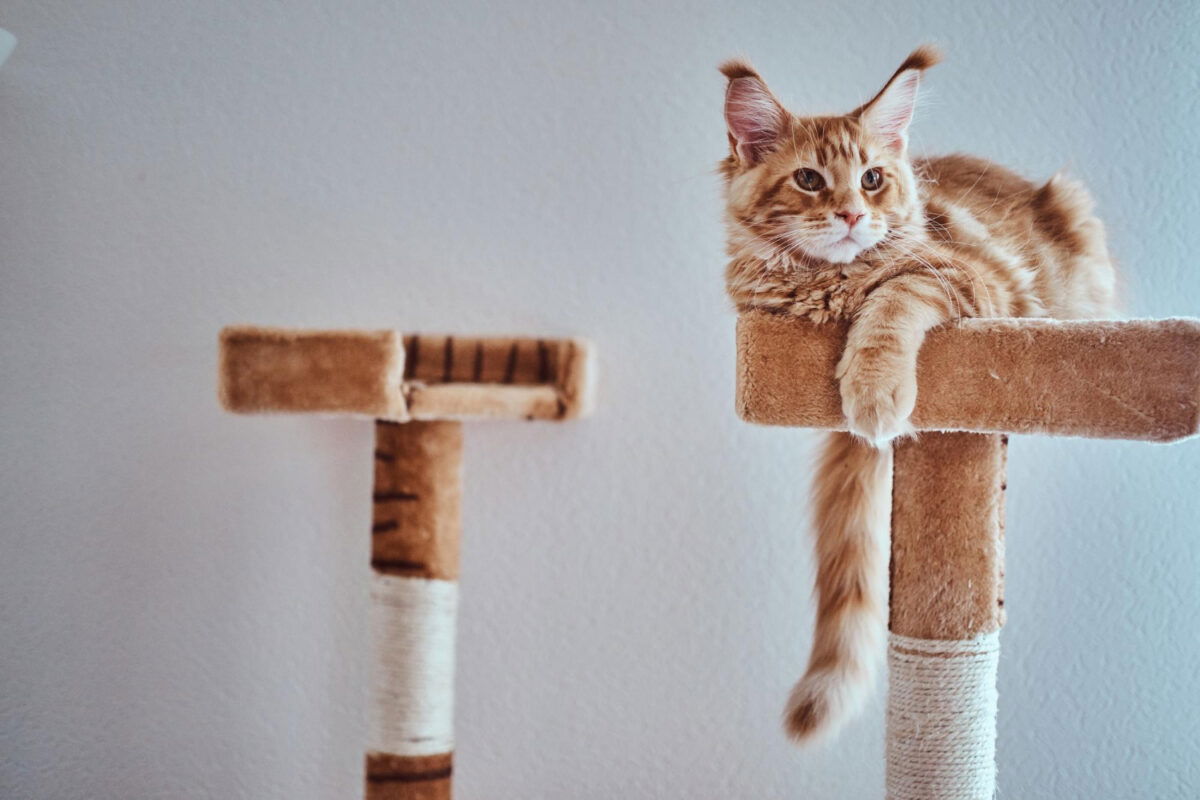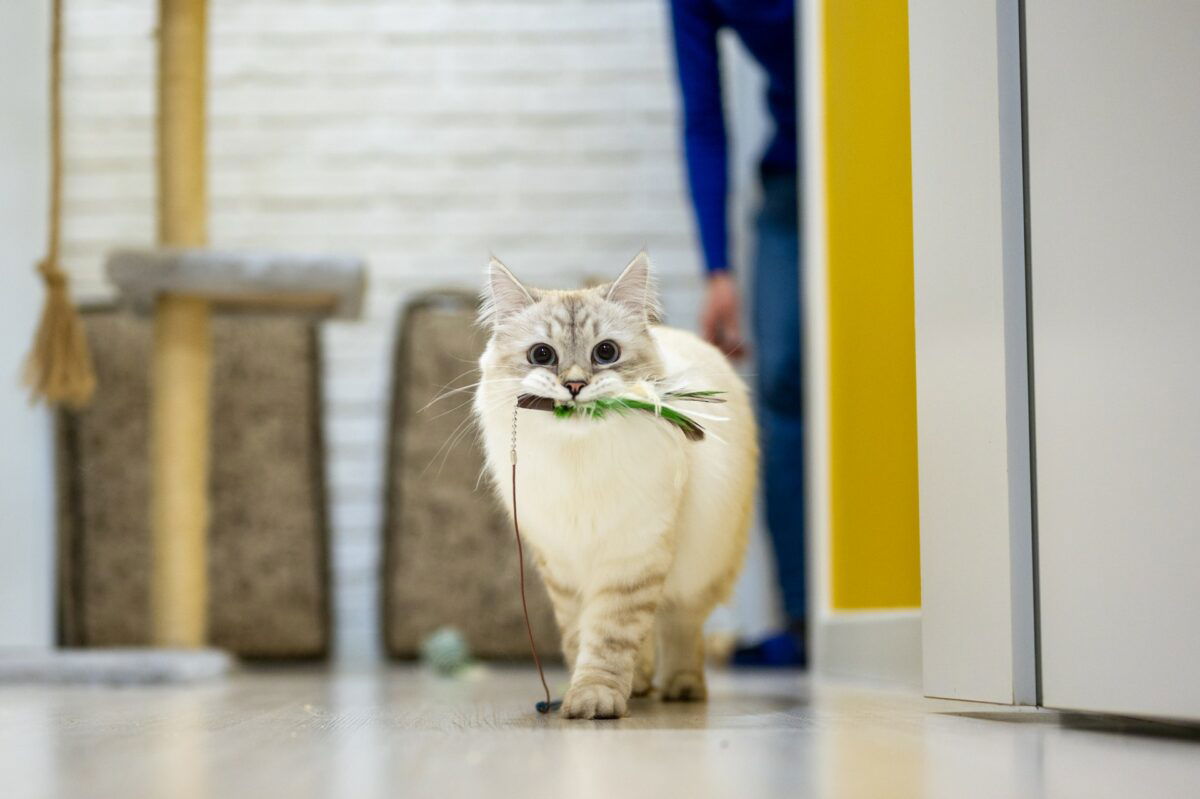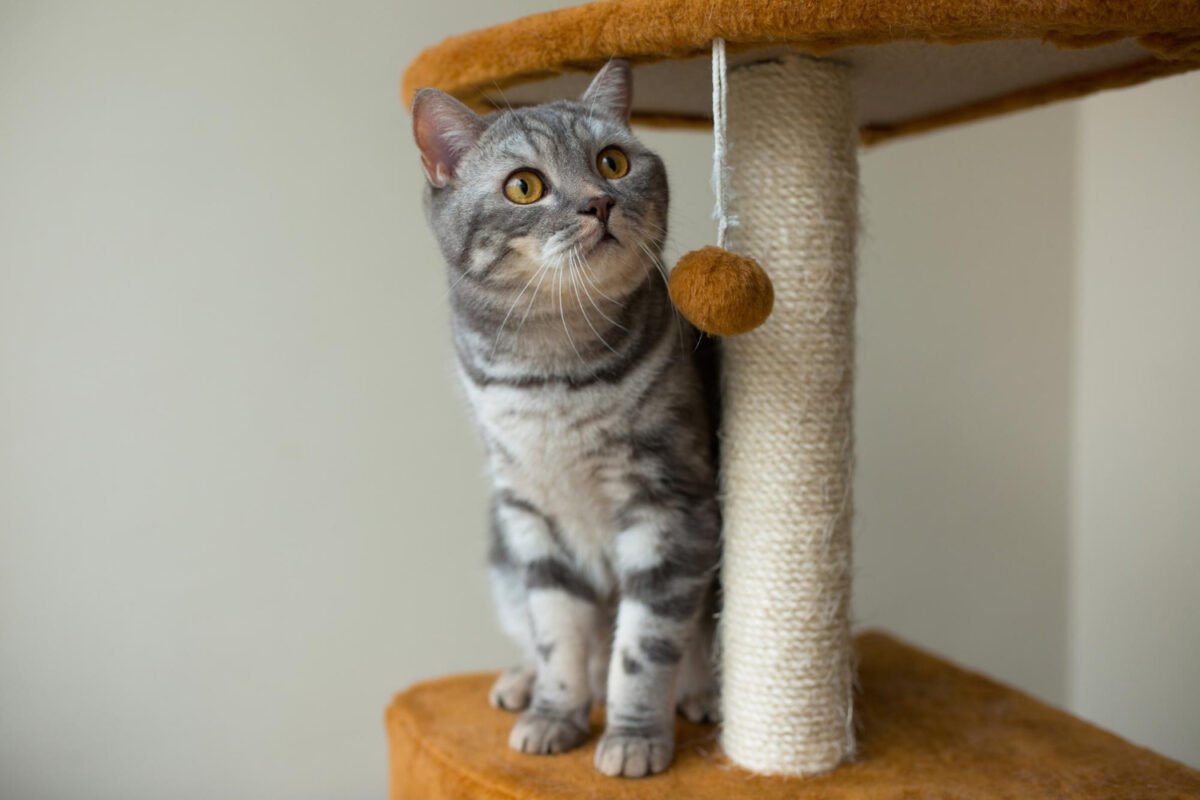We're an affiliate
We hope you love the products we recommend! Just so you know, we may collect a share of sales or other compensation from the links on this page at no additional cost to you. Thank you if you use our links, we really appreciate it!
How tall should a cat tree be? This question might have echoed in your mind before making a purchasing decision for a cat tree.
There’s no doubt that a cat tree is a useful accessory for keeping our furry friends entertained and mentally stimulated especially when left alone at home.
But, it’s possible to ruin your cat’s experience while using the tree, if you get it in the wrong size, leading to the possibility of accidents.
Keep in mind that there’s no single cat tree size that works for all cats. It’s important to appreciate that every cat is an individual and they have their own preference.
What we aim to do is provide you with the several factors that should come into play when choosing a cat tree based on height and size.
While it may be okay to go for taller cat trees, you should also check that the stability of your desired structure is not compromised.
It’s good to strike that balance between cat tree height and stability, to ensure your feline friends are safe when lounging and sprawling on the tree.
5 Factors That Should Determine the Ideal Height of Your Cat Tree
1. Available space in your home
One of the most important considerations before picking up a cat tree should be the availability of floor space within your house.
Get both the vertical and horizontal measurements of the area where you intend to place the cat tree to get an idea of how big the tree should be.

Make sure to give enough breathing space between the tree space and other items within your house.
The space should be wide enough to host the tree without blocking the walkways or getting stuck with other furniture.
2. Your cat’s age and activity level
You should also have your cat’s age in mind when picking a suitable cat tower for them. Kittens are full of energy but they don’t like perching too high from the ground level.
A smaller cat tree with comfy napping spots near the floor level may be suitable for younger felines.
Adolescents and adult cats may need a taller cat tree that is big enough to accommodate their natural desires to climb.
Energetic felines will also need cat trees with multiple perches, hideaway spots, hammocks, and dangling toys, to get endless entertainment in one spot.
Elderly cats can do better with a smaller cat tree that provides enough resting spots for their weakening joints.
Cats with advanced years may not want to make that risky jump to and from high perches on a multiple-level tree.
3. Your cat’s size or breed
Cat breeds with larger bodies such as Maine Coons and Ragdolls may require an equally larger cat tree that provides enough vertical space for endless entertainment.
The big cat trees are made with sturdy components and support structures that can accommodate the weight and size of larger cat breeds, increasing their safety.
Small-sized cat breeds on the other hand can be satisfied with shorter tree structures, provided it has the basics such as scratching posts and a cozy napping area.
4. Your cat’s preference
What does your cat love to do? Knowing your cat’s preference in terms of games and behavior can help in determining the best tree for them.
Cats who love jumping on kitchen countertops, wardrobes, and bookshelves will definitely appreciate having a taller tree that satisfies their natural desire to lounge on a castle.
Timid cats who love staying closer to the ground are more likely to get used to shorter structures, which don’t offer too much elevation.
5. The number of cats in your household
Pet parents with multiple cats need to consider how they can accommodate all their felines in one structure without breeding conflict.
This is exactly what a tall cat tree does. It offers multiple perching spots with adequate hanging hammocks on the side supplemented with two or more hideout spots.

This expansive vertical territory provides all your cats with the opportunity to mark specific spots as their own without causing any conflict.
Pet parents with one cat can consider shorter cat tree structures with one or two levels since it’s enough to provide entertainment and mental stimulation.
How Tall Should a Cat Tree Be?
A cat tree with a minimum height of about 36 inches (3 feet) should be ideal for most average and healthy adult cats.
You’ll want your cat tower to be taller than most furniture within the living room. This discourages the cat from perching on furniture and turns their attention to a cat-friendly structure.
The average kitchen countertops in the US are 36 inches high, so having a cat tree with this elevation or slightly more can discourage your furbaby from climbing on the counter.
However, if your energetic cat is an active climber, or you have multiple of them at home, you may want to consider a structure that towers above 72 inches (6 feet) from the ground.
Most adult cats thrive on a tree that falls within 3 – 6 feet tall, especially when it is furnished with extra components like dangling balls, hammocks, and scratching posts.
In the same breath, senior cats, kittens, or those with limited mobility can do well with single-leveled cat trees that stand under 3 feet from the ground.
Why Are Most Cats Obsessed with Heights?
Both experienced and new cat owners can attest to how their feline friends are so fascinated with heights.
This obsession is deeply rooted in natural instincts that stem from the raw wild cats. As you may know, cats are highly territorial animals.
Sitting high on elevated platforms gives them a good ground to survey their territory and everything around them.
This puts them at an advantage of noticing any encroachment into their area or potential danger, be it from other pets, humans, or prey.
Talking of prey, sitting on high vantage platforms makes the cat aware of the surroundings and they’re able to spot their next meal.
House cats are apex predators in our modern world, but back in the day, wild cats were both predators and prey.
Hiding and napping on top of high trees would protect cats from potential attacks by predators such as foxes, weasels, and cougars.
Back to our house cats, you are most likely to see them resting and napping on the highest point of the tree, because they feel safe.
Most cats love perching on elevated positions because they don’t want any disturbance while napping or sleeping.
If your feline doesn’t have a suitable cat tree, you’re most likely to see them retreating to secluded areas such as on the wardrobe top for a peaceful rest.
The Exception: ‘Bush-Dwelling’ Cats
While it is naturally expected that nearly all cats are drawn to elevated platforms, there’s an exception to this rule.
We equally have cats who get their confidence while lying low and exploring ground-level nooks such as under your sofa or below the table.

Jackson Galaxy calls these cats ‘bush dwellers’ because of their inclination to hoover on the ground surface while simulating a game of hunt.
Such cats may not be interested in perching on high vantage points. They’re okay with scratching on floor-leveled posts and laying on the sofa if they can’t find a suitable single-layer tree.
Frequently Asked Questions (FAQs)
1. Are taller cat trees better for cats?
Taller cat trees are good options for high-energy cats who love staying on raised platforms. Such trees provide multiple levels and platforms to exercise their natural desire to climb.
However, bush dwellers, kittens, and senior cats with special needs can do better with shorter structures.
Cat trees with a single or two easy-to-access levels should work well for cats who love staying and playing close to the ground levels.
2. How wide should a cat tree be?
The horizontal footprint of a cat tree can vary depending on the height, level, and components that make the entire tree structure.
The available floor space in your desired spot will greatly affect the suitable width to select for a cat tree. The base of the tree will also affect the sturdiness and stability of the entire structure.
Cat trees with a base measurement of 24 square inches are good enough to offer the needed stability and prevent the entire structure from toppling over.
Keep in mind that the overall width of the cat tree can also be determined by side branches and horizontal components such as hanging baskets, posts, and hammocks.
3. Are tall cat trees less stable?
Tall cat trees, especially those above 6 feet, may appear flimsy or less stable compared to the shorter ones.
This statement can be true depending on the frame materials used in construction and the overall stability of other components.
Tall heavy-duty cat trees with extra components such as hideaway spots and numerous scratching posts are less likely to topple over when used even by multiple cats.
Most manufacturers would strategically place one condo near the base of the structure to reinforce the stability of the cat tree.
Other techniques used to add the sturdiness of cat trees include the use of anchor straps that can be attached to the wall.
It’s always important to double-check the maximum pet weight recommendation of your desired cat tree before purchasing to guarantee the safety of your feline friend.
4. Can I extend the height of my cat tree?
Modular cat trees and a few other flexible models can have the provision of extending the height or switching configurations.
We don’t recommend extending the height of fixed cat trees since it may disrupt the structural integrity and put your furry friend at risk of accidents.
However, with a little inspiration to modify a cat tree, you can also stretch your creativity by building your own cat tree from scratch.
Conclusion – How tall should a cat tree be?
It takes a combination of various factors to determine the ideal height of your preferred cat tree.
But for the most part, a cat tree standing 36 inches (3 feet) above the ground should be good for most adult cats.
Kittens and senior cats with mobility limitations can thrive on shorter structures with a comfy napping spot and scratching platform.
On the flip side, active climbers and energetic large cats will appreciate cat trees that stand 72 inches (6 feet) above the floor level.
There’s no harm in getting two differently-sized cat trees, provided you have enough room to place them.
Yours is to ensure the trees are sturdy to prevent your active cats from toppling over when jumping or cuddling from one platform to the other.
It’s also not uncommon for cats to avoid using newly bought trees, at least for the first time.
A wrong height or improper placement are among the top suspect reasons why some cats may stay away from trees.
Most cats are also startled by the addition of imposing structures in their environment. Just be patient with your furbaby and train them to use the new piece of furniture at their own pace.
Laura is the founder of Furs'n'Paws. She is a also a pet writer and expert with more than 20 years of experience of working with dogs and cats. She developed a very strong love for animals at a young age. Her passion led her to establish a thriving pet sitting and dog walking business in Dubai. As an expert in pet training, behavior, and nutrition, Laura is committed to helping pet owners and pet lovers by offering high-quality information on a wide range of topics.



No responses yet